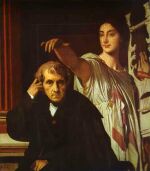 I’ve just finished (third semester in a row) getting all my students’ Digital Poetry Projects burned onto CD’s for them. More and more I’m convinced that this is a project worth doing, and more and more I’m convinced that it’s a project worth improving. The project (broadly outlined) asks students to choose a poem, try to understand it as completely as they can–and to react to it as honestly and deeply as they can–and then communicate that understanding and reaction in the form of a multimedia presentation. I have them use Microsoft PowerPoint–because it’s easy to use, and already installed throughout the college and on many of their home computers. But some of the MMP majors or others who are more techno-minded (three, this term) go beyond that and do some more sophisticated work with Macromedia Director, etc.
I’ve just finished (third semester in a row) getting all my students’ Digital Poetry Projects burned onto CD’s for them. More and more I’m convinced that this is a project worth doing, and more and more I’m convinced that it’s a project worth improving. The project (broadly outlined) asks students to choose a poem, try to understand it as completely as they can–and to react to it as honestly and deeply as they can–and then communicate that understanding and reaction in the form of a multimedia presentation. I have them use Microsoft PowerPoint–because it’s easy to use, and already installed throughout the college and on many of their home computers. But some of the MMP majors or others who are more techno-minded (three, this term) go beyond that and do some more sophisticated work with Macromedia Director, etc.
In any case, their task is to figure out how to divide up the text of the poem, to choose images (with some web-searching training to help them find the right images) for each segment (stanza, line, group of lines, space in between lines–lots of possibilities), to choose fonts, colors, animations, transitions, and then to choose a piece of music (or more than one, or voice narration or annotation) to fit with the whole presentation. The last step is to include “notes” (for which PowerPoint conveniently provides a little “click here” box) to explain their choices–and provide some meta-analysis.
The project has some strengths:
- I’ve never seen students concentrate so hard, and for so long, on making choices about what a poem means.
- They learn about using the web to find very precise results, not taking the first choice.
- They learn about looking for deeper interpretations, rather than just literal illustrations (“The poem says ‘little cat feet’ so I’ll find a picture of a cat'”)
- They have products at the end which are “public” and about which they feel a great deal of justifiable pride.
- They discuss, with a great deal of seriousness, amongst themselves, and even argue vehemently, their interpretations of poems.
- Even students who don’t have very strong English skills can create extremely effective presentations–the same goes for students who have different learning styles (visual, verbal, etc.)
- They learn how to use PowerPoint with confidence and success, which may seem like a trivial skill, but many of them are going to need exactly this skill after graduation. What’s even better, they learn to use PowerPoint with some flair and creativity, as impossible as that may seem.
The project has some weaknesses, too, and I’m working on those…
- Not all students are able to move beyond the “picture of a cat” phase.
- Because I let them choose their own poems, and because I leave so much of the reaction and choice of presentation up to them, I get a lot of poems which barely rise above the Hallmark card level–and sometimes fall far below it. It’s the old “scaffolding vs. dictating” dilemma.
- Burning the damn CD’s (making sure all the presentations work right, first, and getting the music to play) takes an awful long time, especially when, like this semester, I have so many students in the class.
But overall, I’m glad I’ve done it–and it’s going to be very interesting to analyze the evidence and write up the results for my VKP Poster and for conference presentations and articles.
Students love doing these projects, and I’d like to see if I can get more people to do them, in more (and different kinds of) classes.
this sounds like an incredible program!!! would love to see all thier efforts, an dyes i know it is aclass work, but i think it would be fascinating to see:) thanks for sharign what they are doing:)
Thanks. I’m trying to figure a way (with permission, and attention to copyright) to put at least a few of them up on the web. They’re pretty big files. But I appreciate the feedback!
excellent, i will check back and see if it happens:)